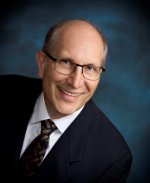 Physician owners of mature ambulatory surgery centers consider re-syndication for a variety of reasons, chief among them being the opportunity to bring on new physician partners to boost the center's patient volume and bottom line.
Physician owners of mature ambulatory surgery centers consider re-syndication for a variety of reasons, chief among them being the opportunity to bring on new physician partners to boost the center's patient volume and bottom line. Owners may also consider resyndication for partner realignment.
"In this case, usually there are some surgeons who are highly productive and others who are unproductive surgeons," says Donald Kramer, MD, CEO of Northstar Healthcare based in Houston, which has developed and managed more than 100 surgery centers. "That can be difficult because federal law and state law prohibit the redistribution of equity based on productivity."
As a result, Dr. Kramer recommends any centers seriously considering resyndication first approach a healthcare lawyer to guide them through the process. "Healthcare is a much regulated field and one needs to make sure that the partnership doesn't violate the law, even if it has great intent and noble purpose," he says.
Steps to resyndicate
The basic steps to resyndication include:
• Make sure there is a seller — it doesn't matter how many buyers there are, if nobody wants to sell their equity the deal won't go through.
• Have an understanding of the original syndication agreement, which typically outlines the steps initial partners agreed upon for resyndication when the partnership began.
• Hire a good healthcare attorney who represents all partners and can advise them through the legal process. The buyers often also have an attorney.
• Consider each partner's vision for their individual careers and center to develop the appropriate mission and vision post-resyndication.
• Conduct a center valuation, which will consider its past, present and future potential.
• Complete the transaction with shares sold at fair market value.
"Every partnership is unique based on the personalities of the physicians and their interests," says Dr. Kramer. "Every center has its own personality, just like every family. It's absolutely critical for physicians to work with an outside expert, to help them work through the tough issues they might have with one another. It's like psychotherapy for the family. People may bring up things they avoided discussing in the past. Resyndication is a chance for internal evaluation."
Vision and cultural development
Initial partners likely developed a vision before syndication, but as businesses change and individuals grow older, these original goals evolve.
"The fact that there is already an existing partnership in place speaks to the fact that there is some history to look back at as compared with the original syndication," says Dr. Kramer. "This is also a chance for partners to come clean about their long-term interests. You may have a physician that's planning to retire or cut back volume greatly in the next few years. This is a great time to discuss how the center will deal with these issues in the future."
Strong collaboration between existing and new physician partners is crucial for a successful resyndication. Everyone should be on the same page before moving forward.
"There must be heart-to-heart discussions on what needs to happen for the center to achieve longevity," he said. "There are other ways besides redistribution of equity that physicians and centers can work together. However, when centers do choose to resyndicate, it's a whole lot easier when everyone is willing to be part of the process than when parties are adverse. When owners are all moving together, it's easier to execute these initiatives."
Future growth opportunity
During resyndication, physician owners discuss where they see the center heading and how they'd like it to function going forward. They may choose to change management companies, introduce new programs or make a cultural shift to attract more non-owner physicians.
"I am shocked by how many surgical centers have no money committed for direct to consumer marketing or sales," says Dr. Kramer. "People put $3 million into opening an ASC and then don't have a strategy for how to drive sales beyond selling products to their partners. The smart surgery centers are the ones that have programs in place to drive sales from physicians and patients that aren't already being served by their partners."
Northstar Healthcare centers typically include 40 to 50 percent of their revenues generated from their partners; the remainder is driven by outside physician professionals.
"That enhances the profitability to the entire partnership," says Dr. Kramer. "We have television and internet ads for the specialties and that drives a large amount of revenue to our centers. It also decreases discord between partners because now they aren't looking at each other and thinking the other doesn't pull their weight."
Outcome
The process will either make the partnership stronger or weaker depending on whether partners can withstand the introspection and work together toward business growth. After the resyndication, the goal is to increase profitability so everyone remaining in the partnership sees benefit.
"If the surgeons commit to a profit-building program, the resyndication is usually a golden opportunity for all partners," says Dr. Kramer. "It's a chance to commit monies to revenue generation programs and not to over-focus on the bad vibes. You don't want to look at a zero sum game. It's important to find ways to make the pie bigger for everyone."
More Articles on Surgery Centers:
Defeat Time & Materials Waste in Surgery Centers: Q&A With Elizabeth Toony
5 Coding & Billing Changes to Anticipate for ASCs in 2014
ASC Physician Engagement: Tips for Communicating With Physician Owners

